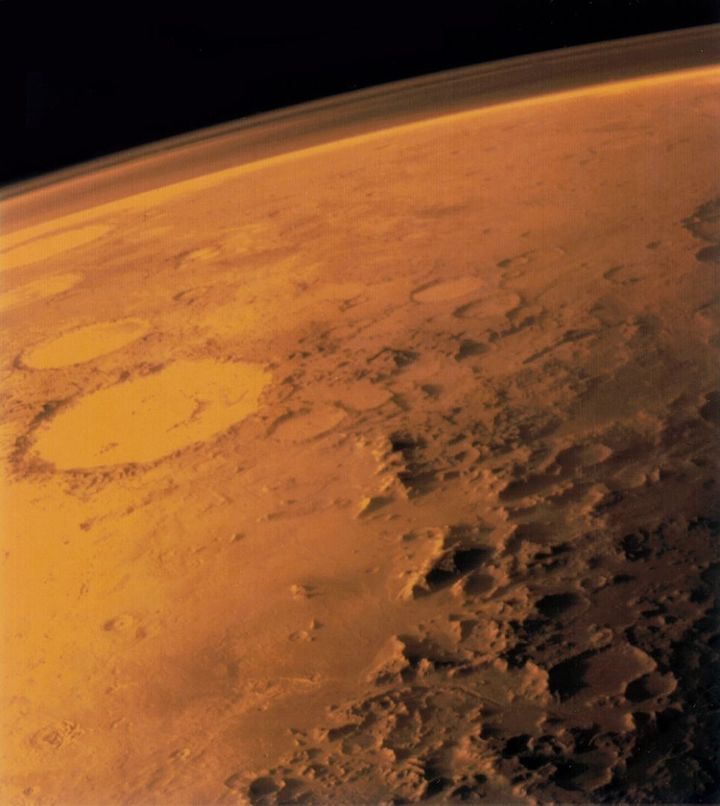13.02.2022
A new study gives potential insights into how the Red Planet's magnetic field, which protected its atmosphere, faded away.

(Image credit: NASA/Viking 1)
Key changes deep in the core of Mars might have led to the planet losing its magnetic field early in its history, a new study suggests.
Today, Mars is a planet with a thin atmosphere that is unable to support substantial running water on the surface, but scientists have found evidence of ancient lakes, streams and perhaps oceans suggesting conditions used to be different. So scientists are eager to understand the presence (or absence) of water on Mars in its early history, particularly to inform assessments of the possibility of life on the Red Planet.
In particular, researchers want to understand what might have caused the planet's protective atmosphere to dramatically thin. Now, a new study examines changes in the planet's core that may have led to the magnetic field of Mars weakening over time, leaving the atmosphere vulnerable to erosion.
The study team's work suggested that roughly 4 billion years ago within the core, "the behavior of the molten metal thought to be present likely gave rise to a brief magnetic field that was destined to fade away," representatives of the University of Tokyo, where researchers were based, wrote in a statement .
The researchers simulated the conditions of the early Martian core using a sample of material expected to be found there, including iron, sulfur and hydrogen. This sample was placed between two diamonds and compressed as well as heated, to attempt to replicate the immense pressures and heat found within the core.
Using X-ray and electron beam observations, the team followed the changes in the sample as the material was being pressurized and compressed. The scientists discovered the initially homogenous Martian material separated into two liquids.
"One of the iron liquids was rich in sulfur, the other rich in hydrogen, and this is key to explaining the birth and eventually death of the magnetic field around Mars," co-author Kei Hirose, a professor at the University of Tokyo's Department of Earth and Planetary Science, said in the same statement.
The experiment also showed the less dense hydrogen liquid rose above the much denser sulfur-rich liquid. This liquid movement caused temporary convection currents in Mars, similar to those that are still in place on Earth. Scientists believe these currents generate our magnetic field.
On Mars, however, the magnetic field only lasted temporarily. After the liquids separated, the study suggests, the currents ceased since there was no more activity to drive the currents.
Around the same time, light hydrogen in the atmosphere blew into space due to erosion from the solar wind, or the constant stream of charged particles emanating from our sun. The lesser atmosphere in turn led to the eventual breakdown of water vapor (as water includes hydrogen). As the atmosphere thinned, liquid water ceased to flow on the surface.
The researchers are hoping that missions such as NASA's InSight lander, which is tracking down seismic activity on the Red Planet, could provide further context concerning core composition.
"With our results in mind, further seismic study of Mars will hopefully verify the core is indeed in distinct layers as we predict," Hirose said. "If that is the case, it would help us complete the story of how the rocky planets, including Earth, formed — and explain their composition."
A study based on the research was published on Feb. 3 in Nature Communications. The work was led by Ph.D. student Shunpei Yokoo, who works in Hirose's laboratory.
Quelle: SC
